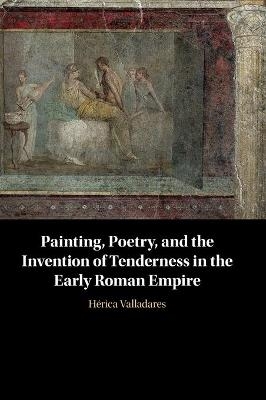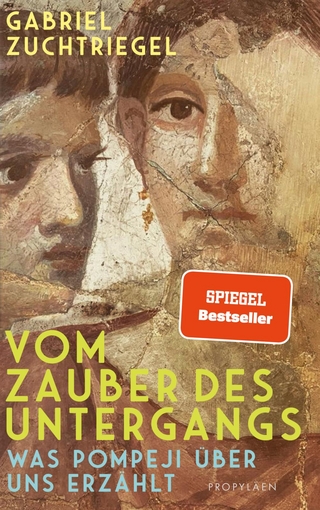
Painting, Poetry, and the Invention of Tenderness in the Early Roman Empire
Seiten
2020
Cambridge University Press (Verlag)
978-1-108-83541-1 (ISBN)
Cambridge University Press (Verlag)
978-1-108-83541-1 (ISBN)
This book's subject and interdisciplinary approach will interest scholars in several subfields of Classics: art history, archaeology, literary and cultural studies. Its focus on pictorial and poetic representations of love stories will also appeal to academics who study the history of emotions, and the wider public intrigued by ancient Rome.
Tenderness is not a notion commonly associated with the Romans, whose mythical origin was attributed to brutal rape. Yet, as Hérica Valladares argues in this ground-breaking study, in the second half of the first century BCE Roman poets, artists, and their audience became increasingly interested in describing, depicting, and visualizing the more sentimental aspects of amatory experience. During this period, we see two important and simultaneous developments: Latin love elegy crystallizes as a poetic genre, while a new style in Roman wall painting emerges. Valladares' book is the first to correlate these two phenomena properly, showing that they are deeply intertwined. Rather than postulating a direct correspondence between images and texts, she offers a series of mutually reinforcing readings of painting and poetry that ultimately locate the invention of a new romantic ideal within early imperial debates about domesticity and the role of citizens in Roman society.
Tenderness is not a notion commonly associated with the Romans, whose mythical origin was attributed to brutal rape. Yet, as Hérica Valladares argues in this ground-breaking study, in the second half of the first century BCE Roman poets, artists, and their audience became increasingly interested in describing, depicting, and visualizing the more sentimental aspects of amatory experience. During this period, we see two important and simultaneous developments: Latin love elegy crystallizes as a poetic genre, while a new style in Roman wall painting emerges. Valladares' book is the first to correlate these two phenomena properly, showing that they are deeply intertwined. Rather than postulating a direct correspondence between images and texts, she offers a series of mutually reinforcing readings of painting and poetry that ultimately locate the invention of a new romantic ideal within early imperial debates about domesticity and the role of citizens in Roman society.
Hérica Valladares is Assistant Professor of Classics at the University of North Carolina, Chapel Hill. The author of several articles on Roman wall painting and poetry, she has held fellowships at the American Academy in Rome and the Center for Advanced Study in the Visual Arts in Washington, DC.
List of figures; List of plates; Acknowledgments; Introduction. On Roman tenderness; 1. The tenderness of lovers; 2. The tenderness of monsters; 3. The tender interior; Epilogue. Tenderness transformed; Bibliography; Index.
| Erscheinungsdatum | 15.01.2021 |
|---|---|
| Zusatzinfo | Worked examples or Exercises |
| Verlagsort | Cambridge |
| Sprache | englisch |
| Maße | 182 x 259 mm |
| Gewicht | 710 g |
| Themenwelt | Geisteswissenschaften ► Archäologie |
| Geschichte ► Allgemeine Geschichte ► Vor- und Frühgeschichte | |
| Geschichte ► Allgemeine Geschichte ► Altertum / Antike | |
| Geisteswissenschaften ► Sprach- / Literaturwissenschaft ► Anglistik / Amerikanistik | |
| Geisteswissenschaften ► Sprach- / Literaturwissenschaft ► Literaturwissenschaft | |
| ISBN-10 | 1-108-83541-4 / 1108835414 |
| ISBN-13 | 978-1-108-83541-1 / 9781108835411 |
| Zustand | Neuware |
| Informationen gemäß Produktsicherheitsverordnung (GPSR) | |
| Haben Sie eine Frage zum Produkt? |
Mehr entdecken
aus dem Bereich
aus dem Bereich
auf den Spuren der frühen Zivilisationen
Buch | Hardcover (2023)
C.H.Beck (Verlag)
20,00 €
Was Pompeji über uns erzählt
Buch | Hardcover (2023)
Propyläen (Verlag)
32,00 €


